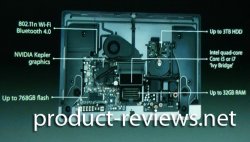Fusion Drive?
It seems to me a complicated, neither here nor there solution to a problem that probably never existed before it was dreamed up.
Just to install decent sized SSD, with an external HDD for those who have greater storage needs seems simple and elegant enough.
It's not complicated, it solves a real problem, and it wasn't just dreamed up.
This general idea has been in use in servers for years now, and Seagate even built a hard drive that was this same basic idea as an all-in-one device (although theirs had so little flash that it wasn't quite as useful.) Intel had this available as a feature a few years ago ("Turbo Memory", again, so little flash that it wasn't really useful,) and has recently revived it again with a reasonable amount of flash.
I thought this was going to just be Apple implementing Intel's newest version, but it appears to be a ground-up implementation that is "more intelligent", by not simply being a cache.
Yes, getting a "one of each" is a simple-enough solution, but it takes actual data management. Most users don't want to deal with tracking which data is where. If you're up for that, more power to you - if you are willing to do the work of organizing your data, that WILL be faster. (For example, the Mac mini Server is available with a conventional arrangement of one SSD plus one spinning drive *NOT* configured as "Fusion".) ** Edit: Whoops, they removed that with this update. Last year you could get the server with one SSD and one spinning drive, this year it's an either/or proposition...
But for most users, not having to think about it is by far the simpler way to do it. "It just works" is what most people want. They don't want to have to remember to put that downloaded game on the spinning drive; they don't want to have to deal with accidentally filling up the boot SSD; etc.
As for the physical implementation... It is not a single-device drive like Seagate's solution. That much is clear. At least on the iMac, it is one conventional 3.5" desktop hard drive with a "stick" style SSD like in the MacBook Air and Retina MacBook Pro. Presumably the Mac mini uses this same arrangement, although it could use two 2.5" mobile hard drives (one spinning, one SSD,) as the server model uses the same chassis and uses two 2.5" mobile hard drives. Personally, I would love the mac mini server to have both two 2.5" mobile hard drives
and a stick-SSD, but the 'midrange' Fusion model will likely be what I get.




